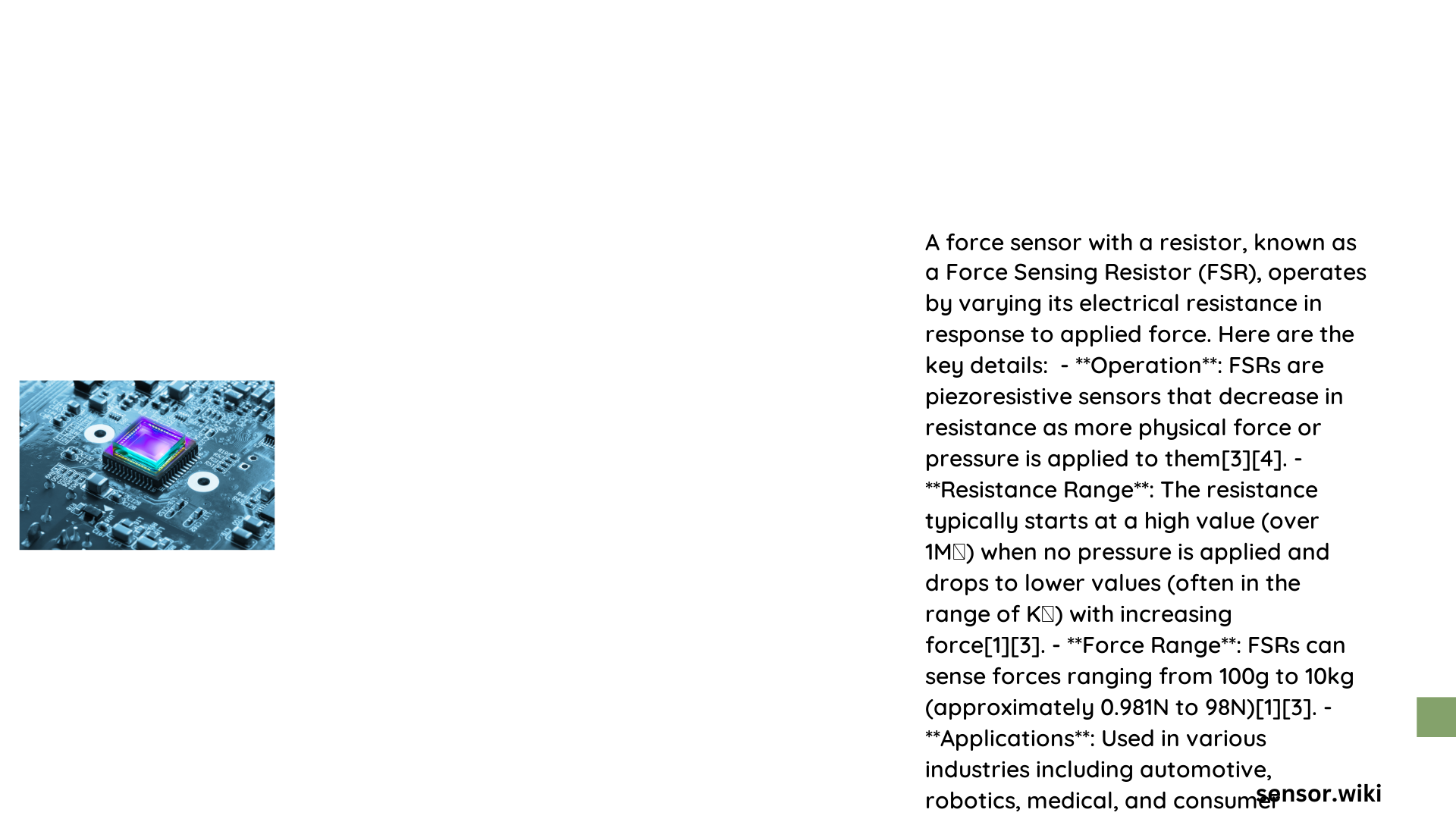Force sensors with resistors represent a sophisticated measurement technology that transforms mechanical pressure into electrical signals through precise resistance changes. These advanced sensors leverage the fundamental principle of variable resistance, enabling engineers and researchers to capture minute force variations across diverse applications ranging from delicate medical instruments to robust automotive systems. By integrating specialized resistive elements, these sensors provide accurate, real-time force measurements with exceptional sensitivity and reliability.
What Are Force Sensors with Resistors?
Force sensors with resistors are electromechanical transducers that convert mechanical force into electrical resistance signals. These sophisticated devices utilize specialized materials that change their electrical resistance proportionally when subjected to external pressure or mechanical stress.
Key Components of Force Sensors
| Component | Function | Characteristics |
|---|---|---|
| Sensing Element | Detects Applied Force | Variable Resistance Material |
| Feedback Resistor | Signal Conditioning | Precision Resistance Value |
| Circuit Interface | Signal Conversion | Voltage Divider Configuration |
How Do Force Sensors Measure Mechanical Stress?

Force sensors operate through a fundamental mechanism where applied pressure modifies the internal resistance of the sensing element. When mechanical force is exerted, the sensor’s resistance changes, which can be measured using a voltage divider circuit.
Resistance Measurement Principles
- Zero-Force State: Maximum electrical resistance
- Increasing Force: Proportional resistance reduction
- Maximum Force: Minimum electrical resistance
What Are the Technical Specifications of Force Sensors?
Performance Parameters
- Sensitivity Range: 0.2 N to 20 N
- Operating Temperature: -40°C to +85°C
- Linearity: ±3% to ±5% of full scale
- Hysteresis: Less than 4.5% of full scale
Where Are Force Sensors with Resistors Applied?
Industry-Specific Applications
Automotive Sector
- Pedal position sensing
- Vehicle weight measurement
- Suspension load monitoring
Medical Technology
- Surgical instrument force feedback
- Patient weight measurement
- Prosthetic limb force detection
Aerospace Engineering
- Structural load monitoring
- Instrument force calibration
- Vibration sensing
How to Select the Right Resistor for Force Sensors?
Resistor Selection Criteria
- Load Resistance: Match FSR impedance
- Power Rating: Typically 1/4 W
- Tolerance: Precision 1% resistors recommended
- Temperature Stability: Low-drift components
What Calibration Techniques Enhance Sensor Accuracy?
Calibration Methods
- Two-Point Calibration: Simple linear mapping
- Three-Point Calibration: Enhanced accuracy
- Temperature Compensation: Drift reduction techniques
Challenges in Force Sensor Design
Technical Limitations
- Environmental sensitivity
- Non-linear response curves
- Signal interference
- Long-term stability
Future Trends in Force Sensor Technology
Emerging Developments
- Miniaturization
- Enhanced material sciences
- Integrated digital signal processing
- Artificial intelligence integration
Conclusion
Force sensors with resistors continue to evolve, offering unprecedented precision in mechanical measurement across multiple industries. Their ability to convert complex mechanical interactions into measurable electrical signals makes them indispensable in modern technological applications.
Recommended Practices
- Always use precision resistors
- Implement proper calibration
- Consider environmental constraints
- Select sensors matching specific application requirements
